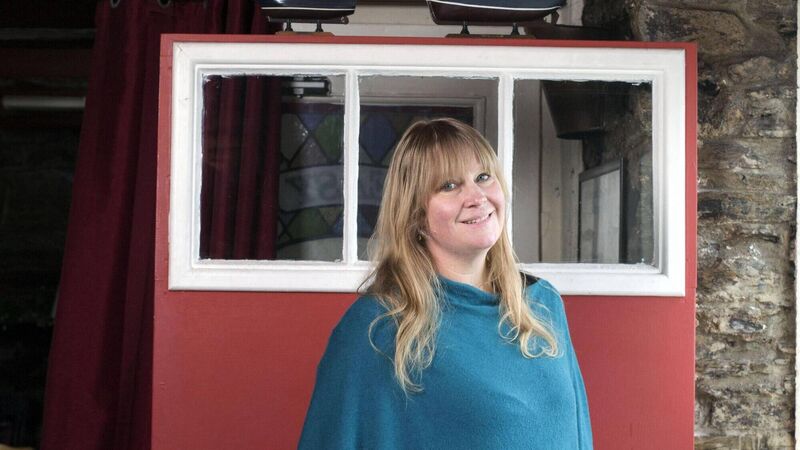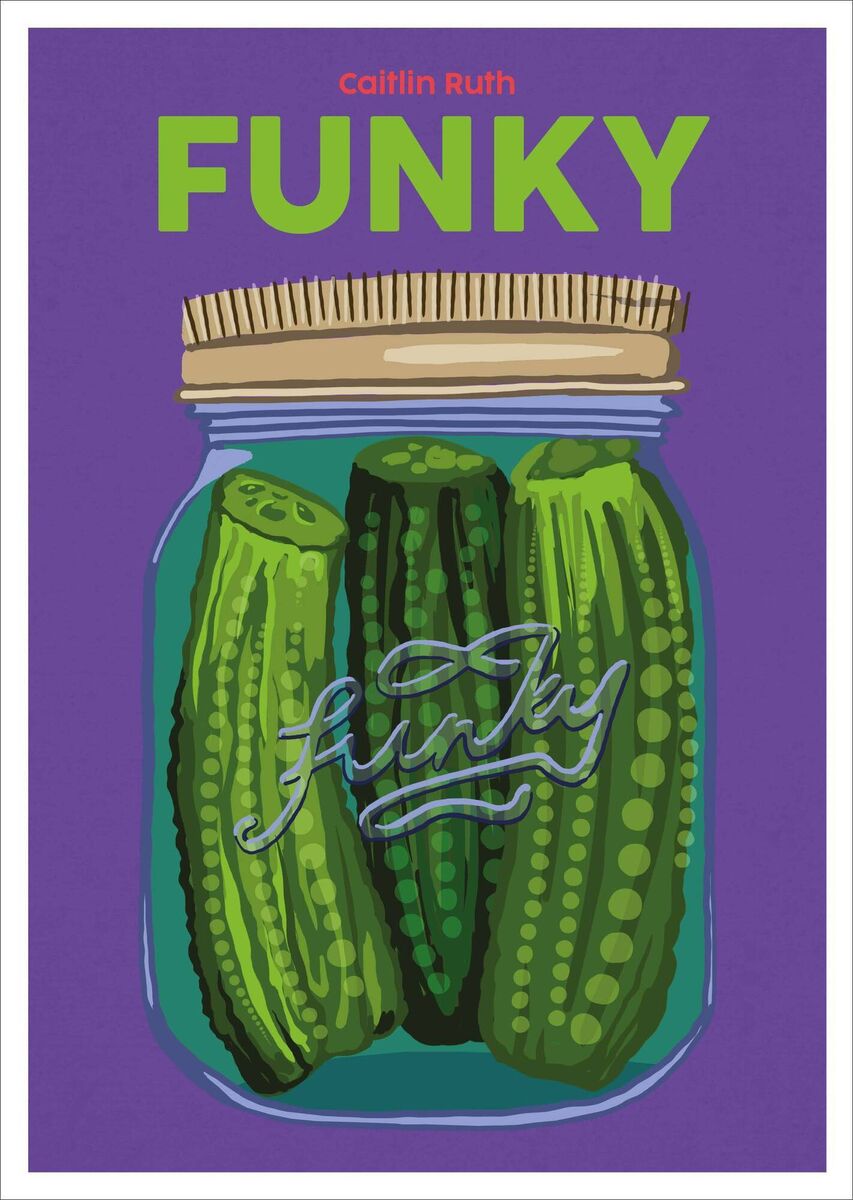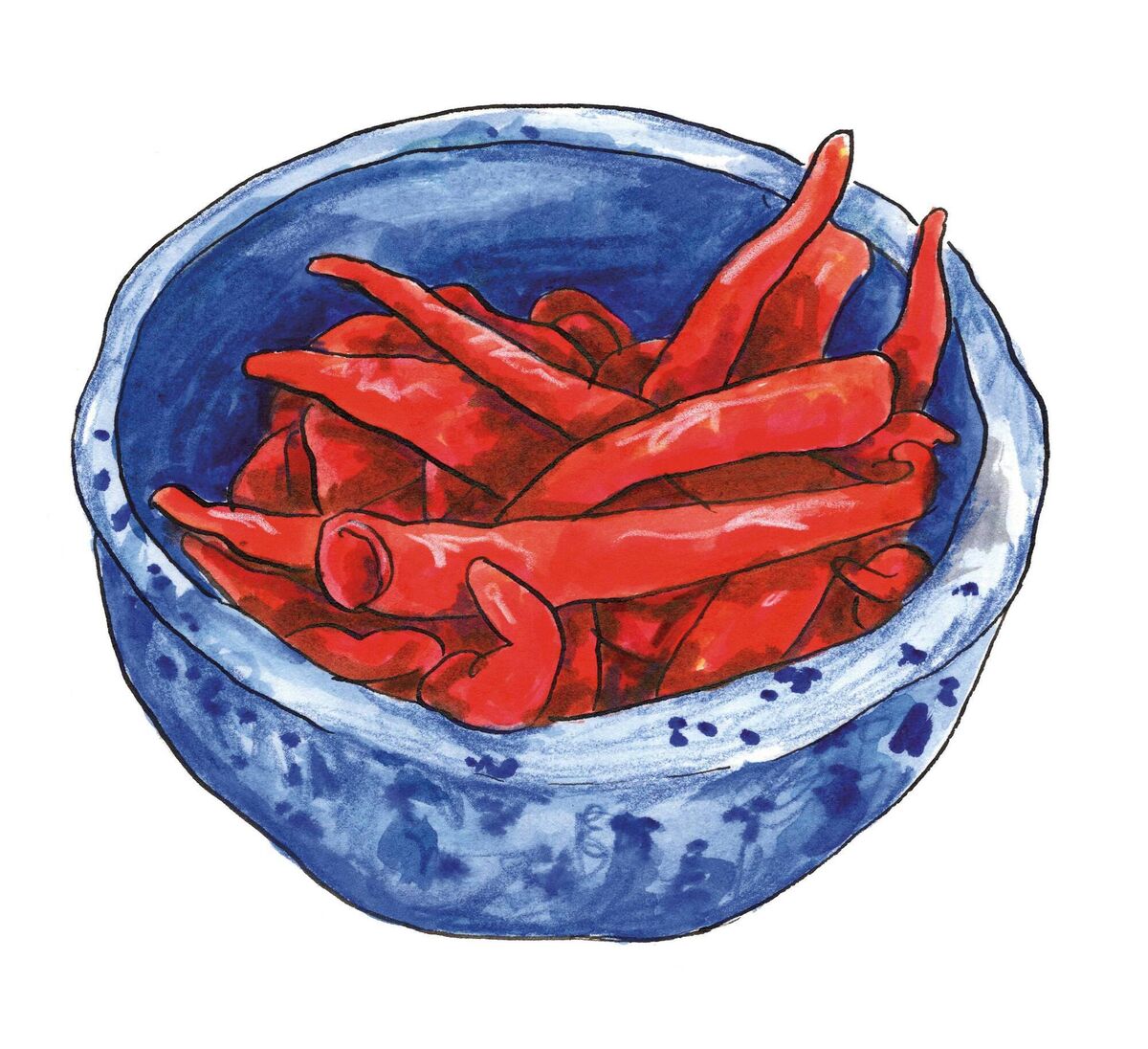Cork chef celebrates all things pickled and fermented in new 'Funky' book

Cork-based chef Caitlin Ruth. Picture Clare Keogh
ONE of Cork’s best-loved chefs, Caitlin Ruth, has released her first book, Funky.
Leading the charge for the third season of innovative Blasta Books, Funky celebrates Caitlin’s love all of things pickled and fermented; those little thunderbolts of flavour that marks the food she creates.
Caitlin reputation was carved out while head chef of the much-missed Deasy’s Restaurant, known for its fish cookery and love of local, seasonal ingredients. The restaurant held a Michelin Bib Gourmand for most of her time there, and regularly featured in the annual McKenna’s 100 Best guide.
After calling time on her final service, Caitlin Ruth Food was born in 2020, celebrating the flavours of Mexico, South America, Spain and Portugal. She hasn’t looked back, cultivating a cross-country cult following.
She is a gifted chef and a whizz with cocktails, but perhaps her most enduring culinary obsession is pickling and fermentation, and Funky is her homage to the love of a good pickled vegetable.
“I always loved pickles, especially the massive dill pickles, bread and butter pickle, and firecracker pickled sausages,” says Caitlin, who grew up in Dublin, New Hampshire.
Her mother was a voracious gardener and preserving the seasonal gluts was part of the annual routine. Jars of tomato sauce nestled beside pickled chillies, pumpkin, and ‘dilly’ green beans, but back then the need to preserve was about survivalism rather than a culinary perspective.
We didn’t have any money growing up, so really it was let’s grow it and save it, so we don’t have to buy it. Mom was a big pickler, there were always pickles in the house.
As a kid, none of this held any magic for Caitlin. Visiting friends’ houses, cupboards were crammed with all the sweet things she never had at home. The row upon row of jars weren’t fun (except for the dill pickles, of course), they were boring.
“I didn’t consider delicious, healthy food to be fun, but pickles? Yes! Firecracker pickled sausage for me as a kid was just the ultimate treat!”

Caitlin started working in restaurants as a pot washer from the age of 12 and cooking from just 14. Then the penny started to fall about how fortunate she was to have access to freshly grown food and the magic of preservation for when the growing season was done.
“There was a shift, and I suddenly realised the food I was making in restaurants connected to the food I grew up with: real ingredients. I was lucky to work in good restaurants for most of the time, and working with real ingredients brought it home to me what my mom was doing.”
Funky amps up the deliciousness factor of pickles. If you thought it was a book about healthfulness, think again! Caitlin’s guiding principle in life has always been to only eat delicious things, and her book is no different. By changing the perception of pickles and ferments from functional to fun, Caitlin wants to encourage people to give them a try.
“I don’t like how pickling and fermentation are separated in most other books. Fermentation is a huge subject, but people are a bit snobby about fermentation versus pickling.
To me, they’re all methods of preservation that makes a tasty, crunchy thing to use with other foods for contrast.
"Make it delicious with a contrast of texture and flavour to cut through the richness of other foods – that’s what I want!”
Funky is all about quick and easy fridge pickles. There are simple vinegar pickles and pickles requiring an extra step of fermentation which can unlock even more of that funky flavour, taking the fear out of this kind of food preservation.
“The risk with these kinds of pickles is extremely low to the point of zero because you’re either putting it in the fridge to stop the fermentation or pickling it and then putting it in the fridge to store.
The recipes in Funky have been chosen for ease – anyone can do it, it’s safe and once you stick the pickles in the fridge, you’re good.
But what to do with all these pickles once they’ve been made?
Funky contains around 40 unique pickle recipes, each with a ‘How To Eat’ section often with multiple suggestions for ways to use the pickle. The recipe for Easy Massage Sauerkraut comes with five ways to use it: in a salad, with shredded duck confit of pulled pork, on a charcuterie board, in a burger, or by making an umami-bomb of a flavoured powder.

“I always want to be generous with recipes, so I shoved a lot in - not just the recipes themselves, but the ‘How To Eat’ and ‘Five Ways’ sections all have loads of quick recipe ideas in them because I really want people to know what to do with pickles. Who wants a mouldy jar of pickles they have to eventually throw away?
“While I was writing the ‘How To Eats’, I found what I really like doing is something three ways. For example, pickled fennel paired with roasted fennel and raw fennel in a salad.
Fermented salad cucumbers give everything you want in a sandwich, salad or burger, then all that amazing pickle juice which is great in a dressing for a salad.
Funky straddles familiar and not so familiar pickles and recipes. From a classic red onion or beetroot pickle and kimchi to pickled swede or sea kale and Caitlin’s childhood favourite, Fiery Pickled Sausages.
Amongst the ‘Five Surprising Ways to Use Dill Pickles’ are recipes for a Pickle Cheesecake and a Pickle Soup.
For Caitlin, there are few things that cannot be improved with a liberal sprinkling of pickles, so where does inspiration come from?
“I tend to think, why not? I had made a blue cheese cheesecake before and put pickles on it, but then I thought, what if you baked the pickles in it?
“The Pickle Soup recipe is so good with elements of both Polish and Russian pickle soups. I’ve been making various versions of it over the years because it’s something you can make with any leftover pickles.”
The recipes collected in Funky are the result of years of curiosity and experimentation. Surely, not everything has been a success.
“I had a glut of artichokes from my local grower. I didn’t know what to do with them but had read somewhere that fermentation apparently transforms the inulin and makes it into something a little more…digestible.
I had a kind of water chestnut idea in my head – a watery crunchy kind of thing that I thought would be amazing.
“I fermented ten kilos and, sure enough, a disgusting slimy mess ensued. A total waste of money, time, work. I tried it again, this time a pickle and on a smaller scale, but that doesn’t do anything for the inulin. So, I prefer to steer clear!
“I haven’t had a lot of luck pickling potatoes, either, but I put a tip in Funky for soaking raw chips in pickle juice. Let me tell you, my Pickle-Brined Fries are so good! Never throw away your brine.”
Despite this shoehorning of as many recipes as possible within the book’s 60-odd pages, many more didn’t make the cut.
“I have a lot of wonderful recipes that didn’t make it into the book. I wanted to have a range of things, recipes that I thought people mightn’t be able to find elsewhere or I thought were important to the world of pickles, (like the pickled red onions), I couldn’t leave it out,” explains Caitlin, “and anyway, they’re just so pretty and taste great on everything!”
Pickles are indeed pretty things, and it’s true that we eat with our eyes first. I predict a new trend for glass-fronted fridges as the new must-have kitchen accessory to show off all our beautifully coloured pickle jars…
Aside from their use as condiments, drinks are also a huge part of pickle culture. In Funky, Caitlin dedicated a section to Ginger Bug, a fermented naturally carbonated drink that’s great as a refreshing ingredient in cooling sodas or zingy cocktails.
“I love Ginger Bug because it’s so magical and easy to make. Reading the recipe takes longer than making the ginger bug! If you really want to brighten up your life, go to your local health food store, get some organic ginger, and make your own Ginger Bug.
It’s a fun little project, doesn’t take much time to make and is perfect for this time of year.
Seasonal and local may be key for Caitlin’s own personal food philosophy, but gluts can exist in the aisles of your local supermarket as well.
“You might come across aubergines on special offer in the supermarket. Buy them up and make a pickle. You don’t need loads of loads of expensive ingredients to make these recipes,” says Caitlin.
“If you have a pantry full of spices, salt, sugar and vinegar, these are the basics for pickling. Use them to make those cheap aubergines from the supermarket exciting, or your glut of seasonal tomatoes exciting. Be ready to take in a little glut; the quicker you can preserve it, the better.”
Caitlin enjoys getting inspired by what’s in front of her.
“I like being presented with something when there’s some sort of challenge,” Caitlin says. “When someone tells me they have 20 kilos of chillies, courgettes, green beans, etc, I want to be inspired by that. Don’t be standing in front of a heap of green beans and feel the need to go search for asparagus!”
With Funky in the kitchen, home cooks will be happy to get in a pickle as often as possible!
Caitlin’s Funky Bread & Butter Courgettes
Makes 1 x 1-Litre Jar
· 800g courgettes (I like a mix of green and yellow)
· 2 small white onions, peeled
· 20g sea salt · 350ml distilled white vinegar or white wine vinegar
· 160g caster sugar
· 1 garlic clove, sliced
· 4 allspice berries
· 1 tbsp yellow mustard seeds
· 1½ tsp ground turmeric
· ½ tsp celery seeds (if you can get them)
· a pinch of chilli flakes
Method;
- 1. Thinly slice the courgettes and onions – you’re aiming for 1mm thick. Put them in a large bowl, sprinkle the salt over the veg and toss to combine. Let the veg sit in the fridge or at room temperature for 4 hours.
- 2. Gently squeeze the water out of the courgettes and onions, then press the veg into your dry, sterilised jar (page 4).
- 3. Put the rest of the ingredients in a small non-reactive saucepan and bring to the boil, then immediately pour it over the veg in the jar, leaving 1.5cm of space clear from the rim of the jar to the top of the veg. You’ll have to do this bit by bit, making room for the liquid by poking a clean knife in around the courgettes and onions at the edges, but it should all go in.
- 4. Cover the jar tightly with the lid and let it cool before refrigerating. Use within three months.
Funky, €15, available from www.blastabooks.com
Follow @caitlinruthfood on Instagram for news of upcoming Funky-inspired events.







 App?
App?


